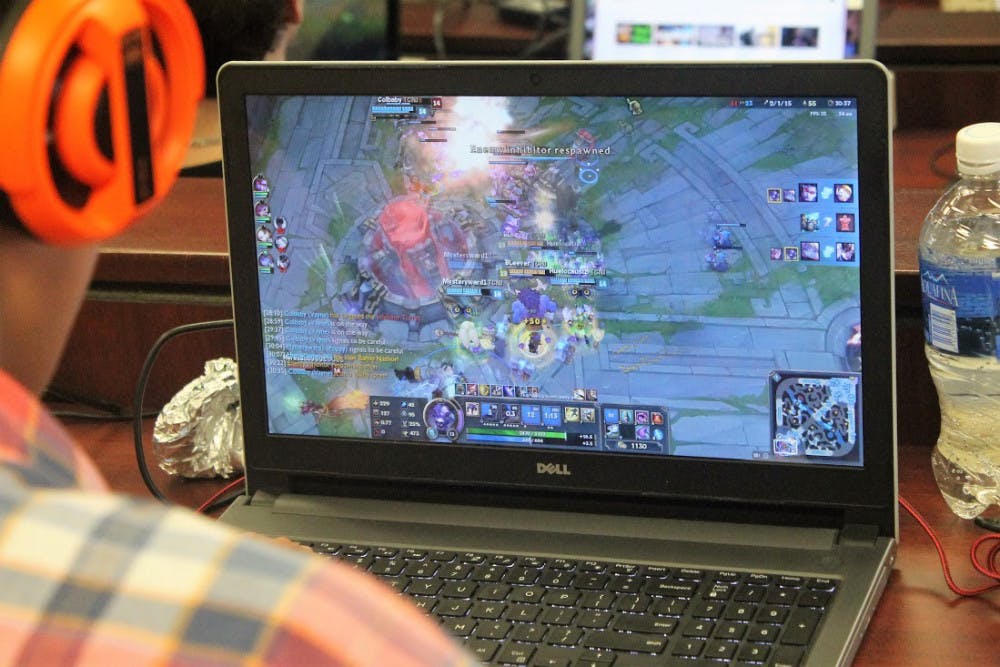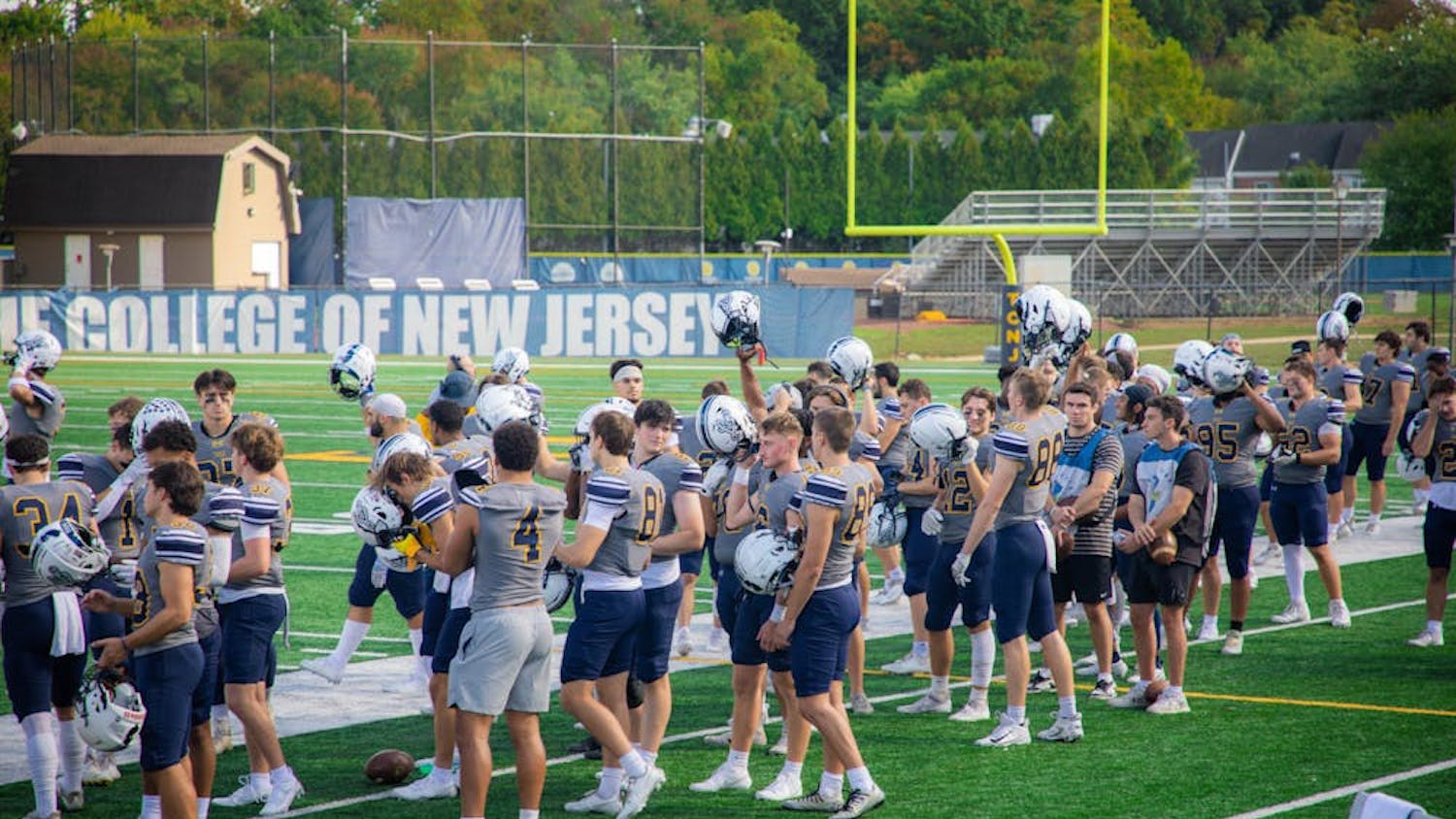By George Tatoris
Sports Assistant
Freshman biology major Jared Wilson spent the morning of Saturday, April 2, in his dorm room in Brewster Hall, packing his red suitcase.
He heaved it across campus to the Business Building and unpacked its contents — a desktop gaming computer.
Most players brought laptops to the event, but Wilson’s couldn’t run the game.
“My laptop is really weak,” Wilson said.
He joined a legion of other College students and alumni gathered in rooms 104, 105 and 106 for the Competitive Gaming Club’s (CGC) third annual “League of Legends” Tournament.
Over the next eight hours, Wilson, senior biomedical engineering major Jeffrey Lawrence, junior finance major Chris Roberts, freshman history major Jackson Kim and sophomore accounting major Bobby St. Pierre dominated their competition, coming out on top in the eight-team tournament.
The eclectic champion team met that same week and had very little time to practice together.
“We played, like, three games yesterday,” said Lawrence, who learned about the tournament from a flyer in the engineering building.
The ragtag bunch ploughed through their competition. It wasn’t even close.

St. Pierre says the win came from “individual raw skill.” Everybody knew how to play their roles and dominate their lanes.
In “League,” the map has three lanes — top, middle lane (mid) and bottom lane (bot) — as well as a jungle in between. With five players per team, each player has their lane-specific role that they perform to fight through three towers per lane. After the team destroys the towers and reaches its enemy’s base, the team must destroy two more towers and then the “Nexus” to win the game.
Wilson was the attack damage (AD) carry, whose job was to “farm” in the bot with the support player. They usually deal the highest damage late in the game, but are weak early on.
Lawrence was the support, a role meant to help out the AD carry in the bottom lane with stat buffs. They are usually weak, but very vital to the team.
Roberts was the midlaner, normally played by an assassin or mage, an ability power-based character that uses ranged magic spells, champion. In one of two solo lanes, they attack the enemy minions to farm the mid lane.
St. Pierre was the top laner, a tank character whose role is to absorb damage. Since these characters are so hard to kill, they can go without support.
Finally, Kim was the jungler whose job is to clear out the “jungle,” which is filled with neutral, non-player enemies.
It was a long eight hours. By the start of the final game, the recycling bin in the back of room 105 was filled with plastic bottles once containing water, Gatorade or — most importantly — caffeinated drinks. The group had a stack of pizza boxes filled with a cheesy meal for the hungry gamers.
Once the last game started, the frenzied sounds of mouse clicks and keyboard taps were only interrupted by the voices of the 10 players communicating amongst themselves.
After 20 minutes — a bit short for a “League” game — it was all over.
Since its release in 2009, the popularity of “League of Legends” has exploded.
Senior interactive multimedia major Yuki Takahashi, the intercollegiate organizer at the CGC at the College, has seen the sport grow from “dozens of people in a basement to selling out Madison Square Garden” in August last year, when the Garden hosted the regional “League of Legends” championships.
“(ESports) as a whole are starting to become more accepted,” Takahashi said.
Takahashi attributes the rise in popularity to accessibility. When he used to play tennis, buying specialized equipment was expensive, he said, but with “League,” the only thing truly needed to play is a computer, which most people already have for work or school. Downloading the game is free.
“Anyone can download it and anyone can play it,” Takahashi said about “League.”
As eSports gained popularity in the U.S., it also found an audience at the College, leading to the founding of the CGC in Fall 2014.
Takahashi’s job in the club is to form teams to compete in an intercollegiate gaming league called the Collegiate Star League (CSL). The club has two “League of Legends” teams in the CSL, an A-team and a B-team.
The B-team was one of the eight to compete Saturday. The players won their first game, but had to forfeit so they could play in the CSL semifinals, which happened to fall on the same Saturday.
They won and are heading to the finals. They didn’t even need to leave campus to compete.
“We wanted to finish the CStar stuff because we put so much effort into that,” sophomore computer science major and future CGC President Beau Lamanna said.
Lamanna hopes that events like this tournament will attract even more attention to the world of eSports and give casual players a chance to compete in a friendly atmosphere.
“These events are pretty much the backbone of what this club is about,” Lamanna said.







